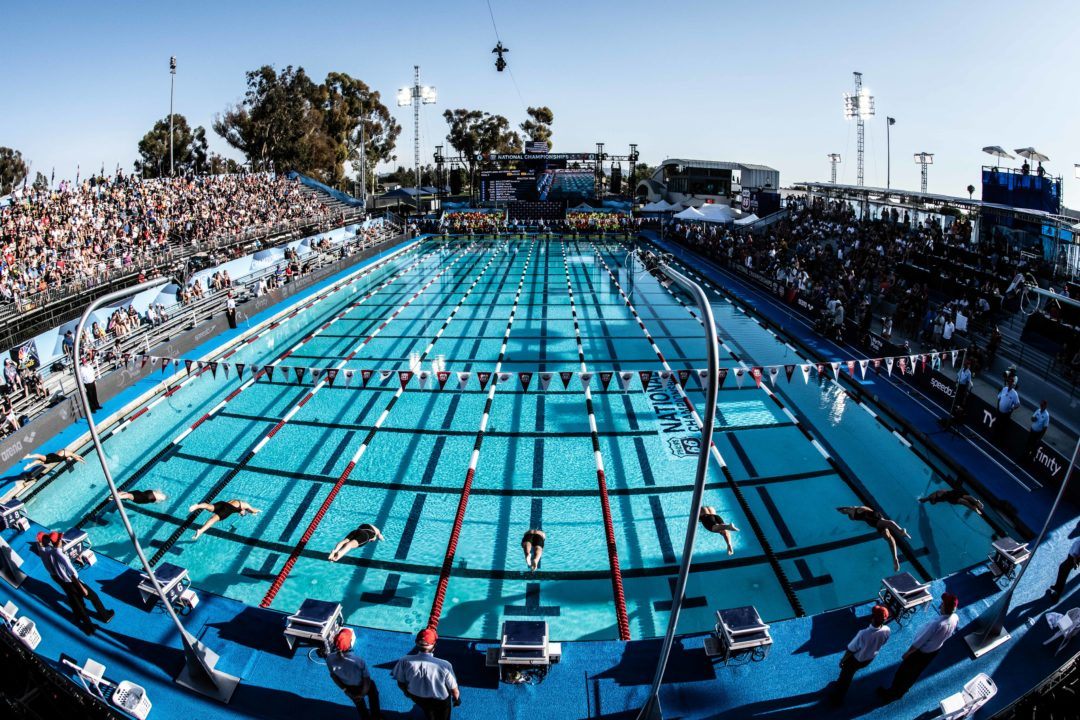By TritonWear
Just as with most things, there are no shortcuts to swimming fast. It takes hard work and a good amount of dedication, both in and out of the water. But before putting in the hours, it’s best to come into the season equipped with a solid swim training plan, so you’re able to train smarter and make the most out of each practice. This is a key step towards a successful season.
Build a winning swim training plan with these tips:
Develop a Periodized Plan
Periodizing a training program means structuring it such that athletes are in a condition to achieve peak performance come their big competition. It divides the plan into specific training cycles and phases, so that training and performance are optimized in both short and long term.
Macrocycle
Macrocycles look at the big picture, and are typically seasonal or yearly plans. One way to set the specific time period of your macrocycle is by noting the major competitions you want to target for the year, and work your way back from there. For instance, you can divide your macrocycle by short-course or long-course season, each macrocycle ending with the short-course or long-course championships.
With your longer term goals in mind, you can then break down your plan into smaller training blocks.
Mesocycle
Mesocycles are typically around 6-8 week training periods within a macrocycle. Each mesocycle will have a specific objective, which should eventually culminate in the accomplishment of the macrocycle goal.
One way to structure mesocycles could be to divide them into these phases: general preparation (training the basics to build a solid foundation), specific preparation (training specific skills and capabilities), pre-competition (race pace training and tapering), and transition (the period after a competition, before a new macrocycle begins).
Microcycle
Microcycles are typically a weekly breakdown within a mesocycle. Microcycles have a specific focus each week, which will be the emphasis of the daily workouts. Your main sets within a microcycle could focus on endurance, sprints, lactate threshold, lactate production, strength, or technique. Dryland training and recovery days would also be incorporated during this period.
Microcycles are generally the cycles which vary most between teams and athletes. This is where training will be personalized and tailored to individual athlete’s unique goals and capabilities.
Don’t Leave Any Room for Injuries
As you develop your training plan, you will be deciding on the volume and intensities of each workout. These will vary depending on which training phase you are in, and what you are aiming to achieve for each cycle.
One critical thing to remember is to monitor training load and ensure changes in load happen gradually, even when you’re moving from one phase to the next, to reduce the likelihood of injury. After all, a winning training plan is no use to an injured athlete.
Execute, Record, Evaluate, and Revise
Execute your training plan and keep track of the details. Implement test sets regularly to track progress, find gaps in the current program (if there are any) and make necessary revisions as you go through the season. And at the end of the year, evaluate your training plan, measure its effectiveness in achieving goals and determine where improvements can be made in the future.
Our Mission: To provide every swimmer and coach access to elite swimming knowledge and tools.
From our competitive swimming and engineering roots, to the sports industry at large, TritonWear is committed to bringing elite sport science to everyone, empowering success through education and innovative technology.
TritonWear is a SwimSwam partner.


I find you very informative and helpful. I am a swimming teacher and coach in Zimbabwe’s second capital and would like to learn more on periodizing my training sessions